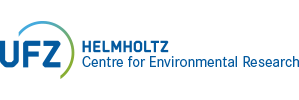Publication Details |
| Category | Text Publication |
| Reference Category | Journals |
| DOI | 10.1002/minf.201200101 |
| Title (Primary) | Model suite for predicting the aquatic toxicity of α,β-unsaturated esters triggered by their chemoavailability |
| Author | Mulliner, D.; Schüürmann, G. |
| Source Titel | Molecular Informatics |
| Year | 2013 |
| Department | OEC |
| Volume | 32 |
| Issue | 1 |
| Page From | 98 |
| Page To | 107 |
| Language | englisch |
| Keywords | Chemoavailability;Computational chemistry;Bioorganic chemistry;Michael acceptor;Carbonyl ester;Michael addition;Transition state;Reaction barrier;Aquatic toxicity |
| UFZ wide themes | RU3; |
| Abstract |
For a Michael-acceptor set of 45 α,β-unsaturated esters, the 2nd-order rate constant of reaction with glutathione, log kGSH, was modeled through the quantum chemical reaction barrier (ΔE≠) employing methane thiol as model nucleophile. Regression of their 48-h toxicity toward the ciliates Tetrahymena pyriformis (log EC50, 50 % growth inhibition) on log Kow (octanol/water partition coefficient) and log kGSH revealed a variation in the relative weights of hydrophobicity and electrophilic reactivity as determinants of the aquatic toxicity. The difference DKk=log Kow−log kGSH turned out as a suitable means for predictively discriminating between narcosis-level (DKk>3.0) and excess-toxic (DKk<2.0) compounds. In the intermediate DKk range (2.0≤DKk≤3.0), both narcosis-level and reactive-toxicity models are applicable for predicting aquatic toxicity. As such, DKk represents the chemoavailability of Michael-acceptor esters, characterizing their likelihood for undertaking covalent reactions with thiol sites of endogenous peptides and proteins. At the same time, DKk introduces a straightforward way for characterizing the applicability domain of QSAR (quantitative structure-activity relationship) models for predicting the toxicity of Michael-acceptor esters. The resultant model suite comprising QSARs for reactive toxicity and baseline narcosis is triggered by the compounds’ chemoavailability, and yields predictions superior to existing approaches. |
| Persistent UFZ Identifier | https://www.ufz.de/index.php?en=20939&ufzPublicationIdentifier=13468 |
| Mulliner, D., Schüürmann, G. (2013): Model suite for predicting the aquatic toxicity of α,β-unsaturated esters triggered by their chemoavailability Mol. Inf. 32 (1), 98 - 107 10.1002/minf.201200101 |
|
